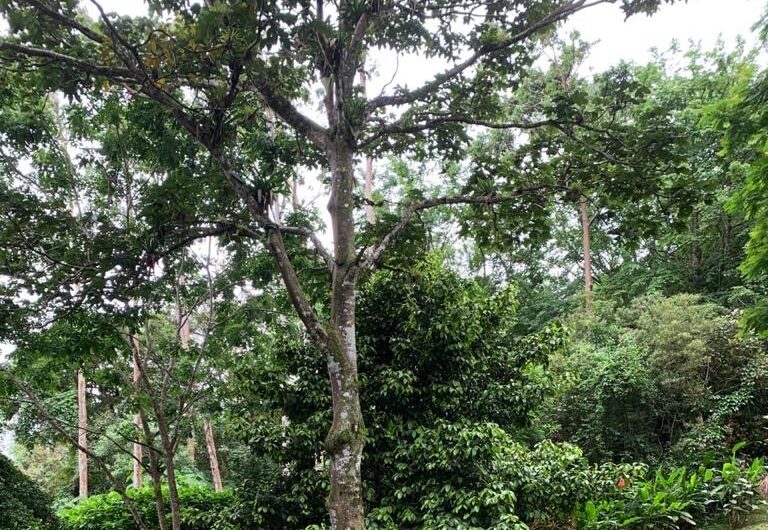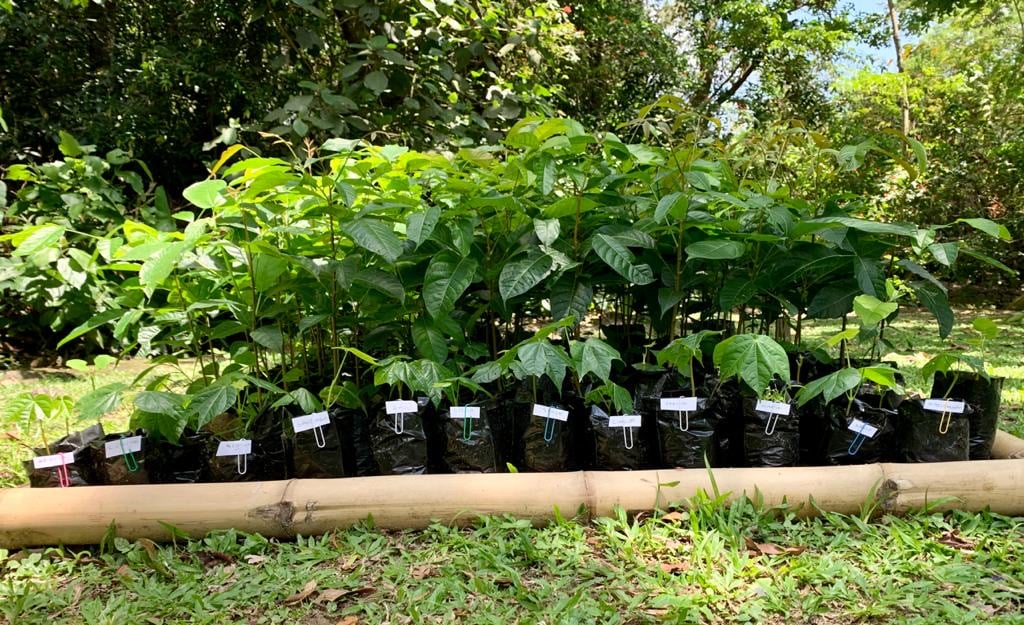Panama Tree
Sterculia apetala
Declared the official National Tree of Panama in 1969, this species is a typical component of a wide range of forest habitats across Panama. In fact, one proposed (though perhaps apocryphal) etymology for the name “Panama” is that it derives from an indigenous word for this tree. The Panama tree is a medium-sized deciduous species that can grow to be as tall as 50m. It flowers variably, once every two years or as frequently as twice a year, depending on location; flowers are typically yellow with red or maroon stripes. Its fruits/seedpods mature about a year after flowering, and its seeds are eaten by agoutis, monkeys, squirrels, deer, and birds such as parrots and parakeets. Seedpods are lined internally with orange stinging hairs (trichomes), which may facilitate seed dispersal as animals often find them sufficiently irritating to discard the seedpods before finishing off all the seeds. Usually a Panama tree begins producing seeds when it is 20–30 years old.
The Panama tree has been put to a variety of uses: its wood for timber, its seeds for eating (roasted, boiled, or used for flavoring), its oils for cosmetics, paints, soaps, and mechanical lubricants, and its bark in traditional medicine to treat ailments such as malaria, skin conditions, and respiratory conditions. These days Panama trees are also planted in residential areas as ornamental and shade trees.
In fact, Canopy Family founder and president Raúl Arias de Para has his own Panama tree on his grounds adjacent to the Canopy Lodge. Raúl planted this tree, now over 20m tall, around 40 years ago! This year he has been making a special effort to collect and transplant the seedlings that have sprouted up around it; so far he has distributed about 20 seedlings to friends and family and donated 80 more to a local conservation organization. To Raúl, these trees represent the “continuity of life” and hope for a strong future for our country.
Raúl with his seedlings.
Raúl’s grandson Santiago assists with marking the seedlings to be transplanted.
A Panama tree seedling, with its parent in the background.
Panama tree seedlings (first row) with the names of their intended recipients.
References
Croat, T. B. (1978). Flora of Barro Colorado Island. Stanford University Press, Stanford, CA.
https://biogeodb.stri.si.edu/bioinformatics/sarigua/species/101.





